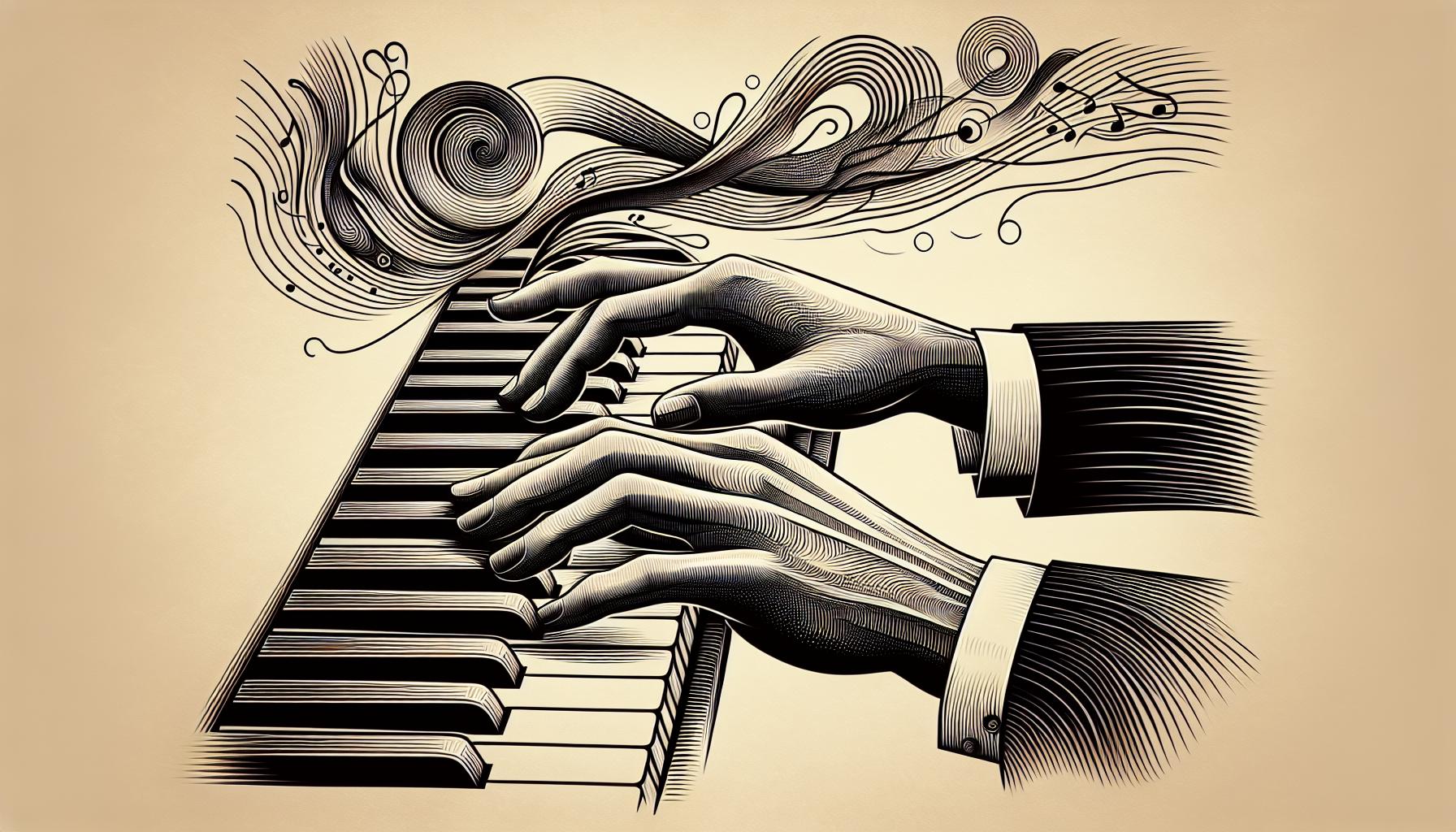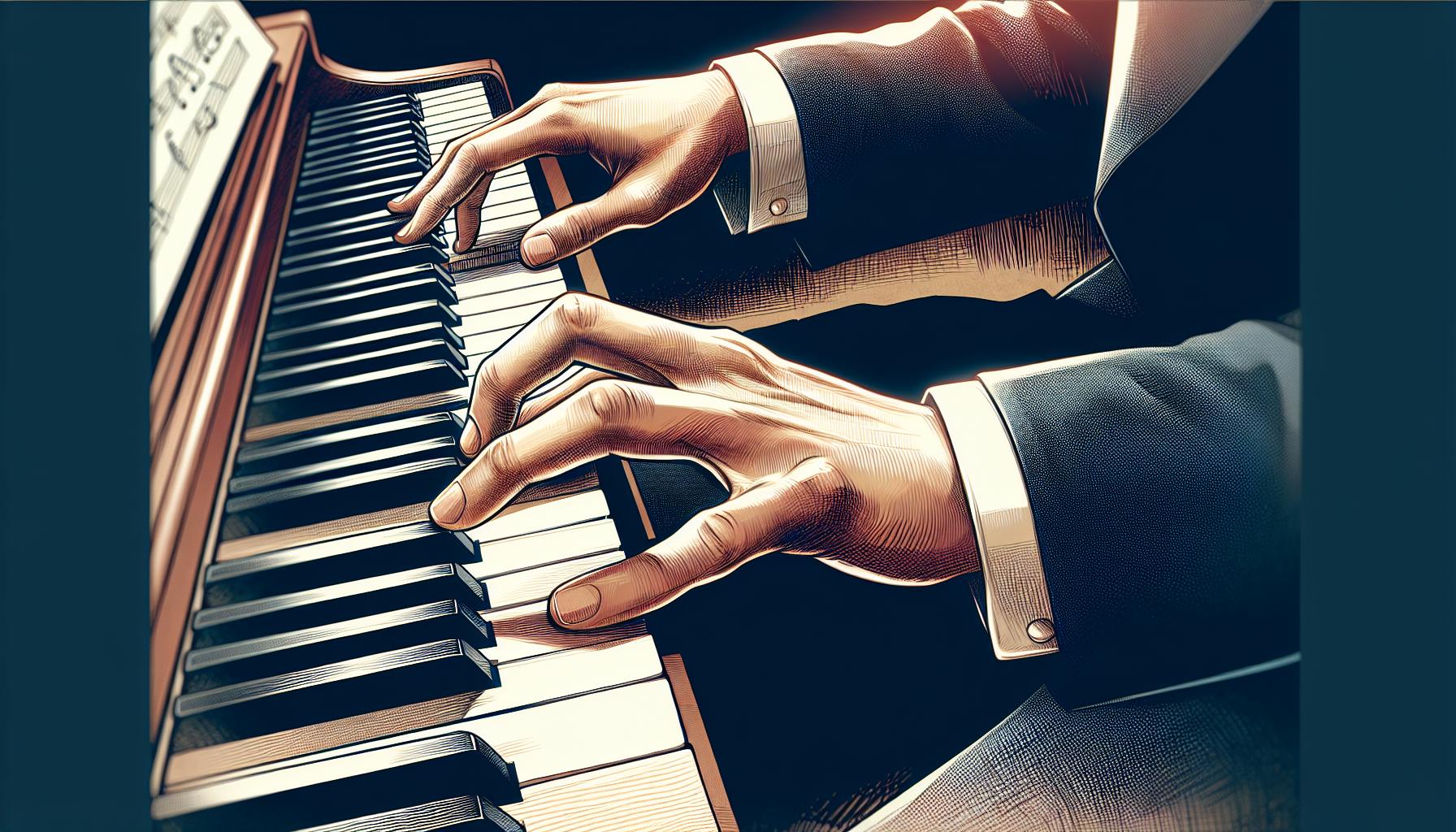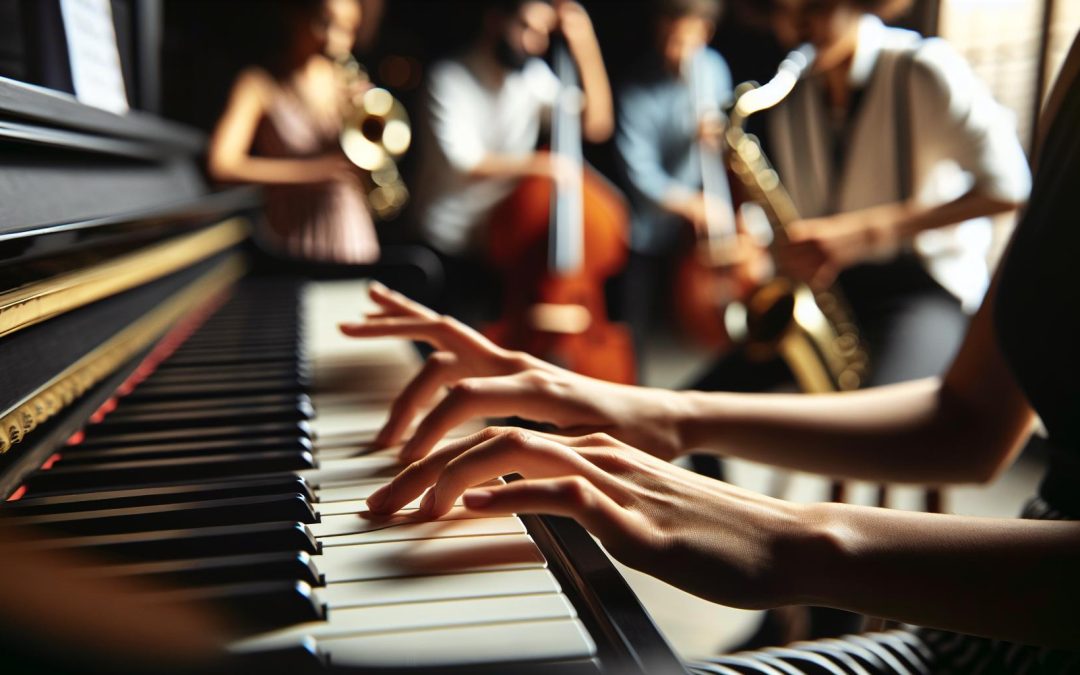Jazz keyboard voicings are the spice that gives jazz music its unique flavor. Imagine each chord as a color palette, and the way a jazz pianist chooses to play these chords as the brushstroke that paints a masterpiece. It's not just about hitting the right notes; it's about how they're played together, creating layers of sound that can evoke a range of emotions.
Diving into the world of jazz keyboard voicings opens up a universe of creativity and expression. Whether you're a seasoned pianist or just starting to explore the depths of jazz, understanding these voicings can transform your playing. It's like unlocking a secret language that lets you communicate with your audience on a whole new level.
Importance of Jazz Keyboard Voicings
Jazz keyboard voicings are much more than merely playing chords on a piano; they're the backbone of the jazz sound that enthusiasts have come to know and love. These voicings, or the way in which notes of a chord are spread out and played on the instrument, add depth, color, and texture to the music, creating a rich tapestry of sound that is distinctly jazz.
One might liken jazz voicings to the spices in a dish. Just as the right combination of spices can transform a meal from ordinary to extraordinary, the right voicings can elevate a jazz piece, making it truly resonate with the listener. It's not an exaggeration to say that jazz voicings are pivotal in shaping the mood and emotional impact of a piece. Whether they aim to invoke a feeling of nostalgia, joy, sorrow, or contemplation, the chord voicings chosen by a jazz musician play a crucial role.
For pianists, mastering jazz keyboard voicings means moving beyond basic chord structures to explore more complex and expressive ways to play. This involves learning various voicing techniques, such as rootless voicings, shell voicings, and drop 2 voicings, among others. Each technique offers a different flavor and texture, allowing the musician to convey a wide range of emotions and styles within their performances.
Rootless voicings, for instance, omit the root of the chord and focus on the 3rd, 7th, and sometimes the 5th or 9th. This approach provides a more open sound and leaves space for bass instruments to fill in the root. Shell voicings, on the other hand, strip the chord down to its bare essentials—usually just the 3rd and 7th—offering a minimalist texture that is both clear and powerful.
The exploration of jazz keyboard voicings doesn't just benefit those aiming to become professional musicians. Even beginners can find joy in discovering how shifting one note in a chord can change the whole feel of a song. It’s an exploratory process that fosters creativity and encourages a deeper understanding of music theory and harmony.
Types of Jazz Keyboard Voicings

When diving into the realm of jazz keyboard voicings, pianists encounter a world rich with diverse styles and techniques. Each type of voicing offers a unique texture and emotional depth, turning the keyboard into a versatile instrument capable of expressing the intricate layers of jazz music. Among these, a few stand out for their widespread use and foundational role in jazz harmony.
Rootless Voicings are a go-to technique for many jazz pianists. As the name suggests, these voicings omit the root of the chord, which is often played by the bass instrument in a jazz ensemble. This absence allows for a more spacious sound and gives the pianist the freedom to incorporate more colorful tones, such as the 9th, 11th, and 13th. Rootless voicings thrive in ensemble settings, where the combined instruments create a full harmonic picture.
Shell Voicings strip down chords to their bare essentials — often just the third and the seventh of the chord, sometimes including the root or the fifth. This simplicity makes shell voicings incredibly versatile and easy to move around the keyboard. They are especially useful for beginners or when accompanying a soloist, providing a clear harmonic structure without overcrowding the sonic space.
Drop 2 Voicings are another pillar in the jazz pianist's toolkit. This technique involves dropping the second-highest note of a closed-position chord down an octave, creating a wider voicing that allows each note to be heard more distinctly. The result is a richer, more resonant sound that is particularly effective for solo piano performances. Drop 2 voicings can add depth and warmth to any piece, making them a favorite among jazz musicians.
To illustrate the diversity and application of these voicings, consider the following examples in a C Major 7 context:
| Voicing Type | Example Notes |
|---|---|
| Rootless | E, B, D, F |
| Shell | C, B, E |
| Drop 2 | G, C, E, B |
Each of these voicings presents a different angle of the C Major 7 chord, showcasing the pianist's ability to shape the music's mood and texture.
Techniques for Playing Jazz Keyboard Voicings

Mastering jazz keyboard voicings goes beyond knowing various voicing types. It's about how these voicings are skillfully brought to life through techniques that embody the spirit of jazz. The journey from written note to musical expression involves a blend of foundational practices and innovative adaptations, all aiming to enhance the rich tapestry of jazz music.
Voice Leading is a critical technique in jazz, ensuring a smooth transition between chords. By moving each voice to the nearest chord tone in the ensuing chord, musicians create a seamless flow in the music. This technique minimizes movement, which not only makes playing easier but also weaves a cohesive harmonic narrative. It’s particularly powerful in songs with complex chord progressions, as it maintains a sense of continuity and connection.
Another essential technique is Rhythmic Variation. Jazz thrives on its rhythmic dynamism, and the keyboard is no exception. Players often experiment with syncopation, shifting accents, and altered rhythms to add excitement and unpredictability. This approach breathes life into voicings, making them feel fresh and spontaneous. The key is to remain fluid, allowing the rhythm to ebb and flow naturally within the structure of the piece.
Pedaling offers a means to enrich a voicing's texture. By skillfully using the sustain pedal, keyboardists can create a legato effect, connecting notes and chords that might otherwise sound disconnected. When overused, however, it can muddy the sound. The trick lies in judicious application—clearing the pedal after chord changes to preserve clarity while still benefiting from the pedal’s enriching effect.
Incorporating Melodic Lines within chord voicings can elevate a performance from good to unforgettable. Instead of merely accompanying, the keyboard becomes an active voice in the melody, intertwining melodic phrases with harmonic structures. This technique requires a deep understanding of both the melody and the harmonic framework, enabling the player to adroitly weave melodic lines into the chord voicings without losing sight of the underlying harmony.
Applying Jazz Keyboard Voicings in Songs

When it comes to applying jazz keyboard voicings in songs, the process extends beyond mere technical know-how. It's about interpreting a song's emotional and harmonic landscape, and then painting it with rich, evocative chords. Jazz pianists often start by mastering the standard chord progressions found in many jazz standards. This foundation allows them to explore more complex voicing techniques effectively.
One common starting point is reharmonization. This involves altering the original chords of a song to introduce new colors and textures. For instance, substituting a dominant seventh chord with a more tension-filled altered dominant can drastically change the mood of a passage. Learning to apply such substitutions tastefully is paramount for a jazz pianist wanting to add their unique stamp on a piece.
Incorporating voicings into a song also means being mindful of the role they play within a band. When accompanying a soloist, for example, it's important to provide a supportive and complementary backdrop. This often means opting for sparser, less intrusive voicings to allow the soloist's lines to shine through. Conversely, during solos, richer, more elaborate voicings can be used to showcase the keyboardist’s virtuosity and harmonic knowledge.
Interplay and Dialogue
A captivating aspect of jazz is the interplay and dialogue between musicians. Keyboard voicings are crucial here, as they can respond to, or even provoke, responses from other band members. This interaction creates a dynamic and evolving performance, showcasing the fluid nature of jazz.
Practice Makes Perfect
To effectively apply jazz keyboard voicings, extensive practice is imperative. This includes:
- Transcription: Learning voicings from recordings by ear not only improves aural skills but also introduces players to a wide array of voicing possibilities.
- Playing along: Practicing with recordings or in a band setting helps solidify the application of voicings in real-time musical situations.
- Experimentation: Constantly trying new voicings and chord substitutions in different contexts sharpens one’s ability to think on their feet.
Pianists should also study the work of jazz keyboard legends, absorbing nuances from their playing to develop a more authentic and expressive style.
Advancing Your Jazz Keyboard Voicings Skills

Once a foundational understanding of jazz keyboard voicings is in place, the journey towards advancement requires exploration beyond conventional boundaries. To truly elevate one's skill in jazz keyboard voicings, it's essential to dive into techniques that challenge the player's creative and technical abilities.
One effective method to enhance voicing skills is through the practice of inversions. By playing chord voicings in different positions, keyboardists can discover a wider range of sounds and learn how to smoothly transition between chords in a progression. This technique not only broadens the harmonic palette but also aids in developing a more fluid playing style.
Incorporating non-traditional rhythms into one's playing can open up new avenues of expression. Jazz is as much about rhythm as it is about harmony, and experimenting with syncopation or odd time signatures can add a fresh dynamic to voicings. This approach encourages keyboardists to think outside the box and explore the rhythmic possibilities within their harmonies.
Listening and transcribing solos from jazz greats is another invaluable tool for advancement. By taking the time to listen carefully to recordings and transcribe the voicings used by legendary jazz keyboardists, musicians can gain insight into the application of theory in practice. This exercise not only improves ear training but also provides a comprehensive understanding of how voicings can shape the narrative of a solo or composition.
A significant leap in skill level may also come from collaboration with other musicians. Playing in a band or with a jam group offers real-time feedback on one's voicing choices, enabling the musician to understand how their voicings fit within the context of a group. The interaction with other instruments can highlight the importance of voicings in supporting or leading within an ensemble.
Lastly, embracing the art of improvisation with the keyboard can significantly enhance one's mastery of jazz voicings. Improvisation allows musicians to experiment with chord voicings on the fly, testing out new harmonic textures and progressions in a spontaneous setting. This practice not only boosts creativity but also hones the ability to adapt and respond musically in varied performance contexts.
Conclusion
Exploring jazz keyboard voicings is a journey that takes one beyond the realm of basic chord structures into a world where creativity knows no bounds. By mastering inversions and experimenting with non-traditional rhythms, players can unlock a whole new spectrum of sound. The wisdom of jazz legends through transcription offers invaluable insights, while collaboration sharpens one's ability to adapt and thrive in a group. Above all, embracing the art of improvisation is key to discovering one's unique voice on the keyboard. With these skills, the possibilities are endless, inviting players to continuously evolve and redefine their musical expression.
Harlan Kilstein began playing piano during covid with no piano background at all. He taught himself how to play learning what to do and what not to do.
Today he's an advanced intermediate player and can help you grow in your skills because he learned all this on his own.








